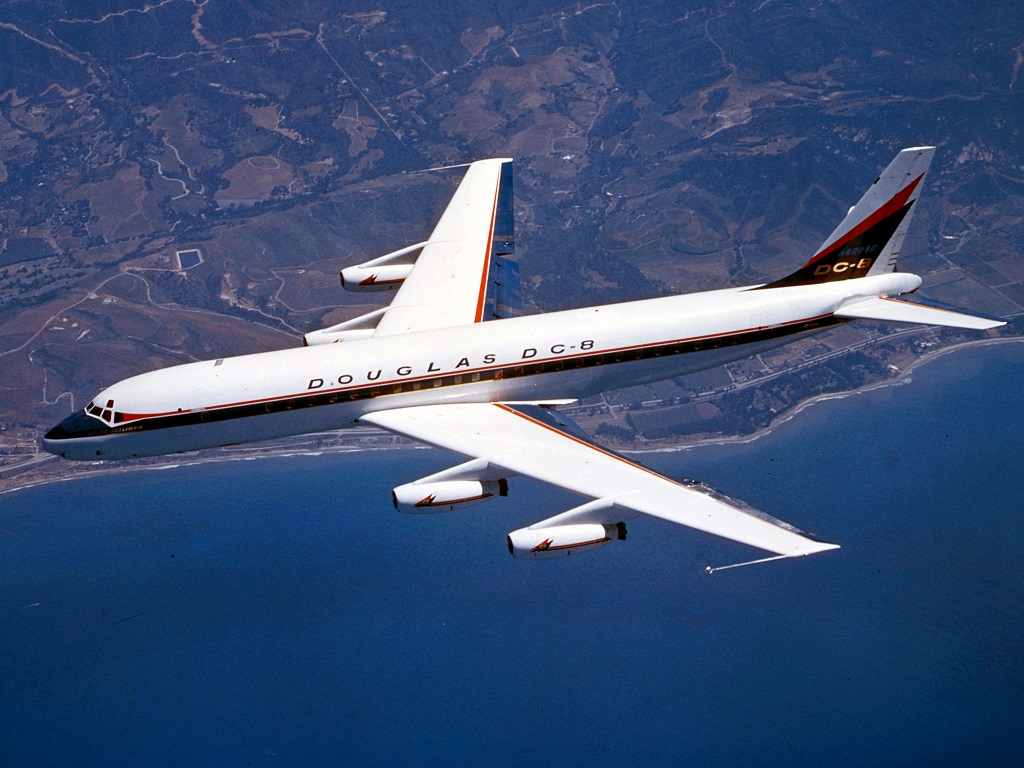Exclusive Look At The Boeing SST Mockup
28 June, 2023
6 min read
By joining our newsletter, you agree to our Privacy Policy
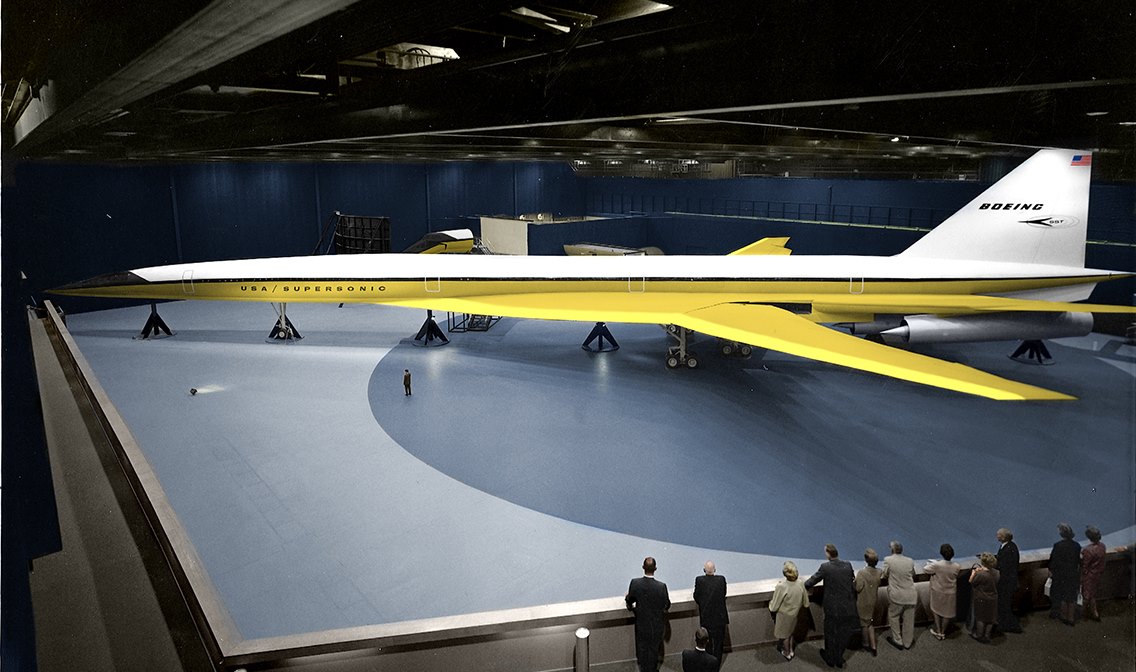

We have an exclusive look at the Boeing SST which was the US competition to the Concorde. It was the 1960s and America was on a race to the moon, a race to build a supersonic airliner and a race to build the world’s biggest passenger aircraft and first widebody, the 747. All at once.
JOIN: AirlineRatings.com YouTube Channel
GET: Accurate MH370 Information From AirlineRatings.com Newsletter
SEE: GT’s Radar Slams Netflix MH370 Doco
Those were the times when everything seemed possible, even at the same time. “We were going to the moon … and there was just this whole belief in America that there was nothing we couldn’t do, that whatever we set ourselves to, no matter how much it cost or how much work it was, there were no limits,” says Boeing historian Michael Lombardi (pictured below).
“The SST is a symbol of that period when we could do anything we were planning on doing, and it was the biggest program at Boeing. Other than Apollo, [the SST] was the biggest aerospace program in America,” according to Lombardi. “We wanted to go to the moon and built the 747, but the Boeing 2707 was always the number one project at Boeing. Joe Sutter, the ‘father of the 747’, frequently complained about how difficult it was to get engineers to construct his aircraft, as everyone was always busy with the SST.”
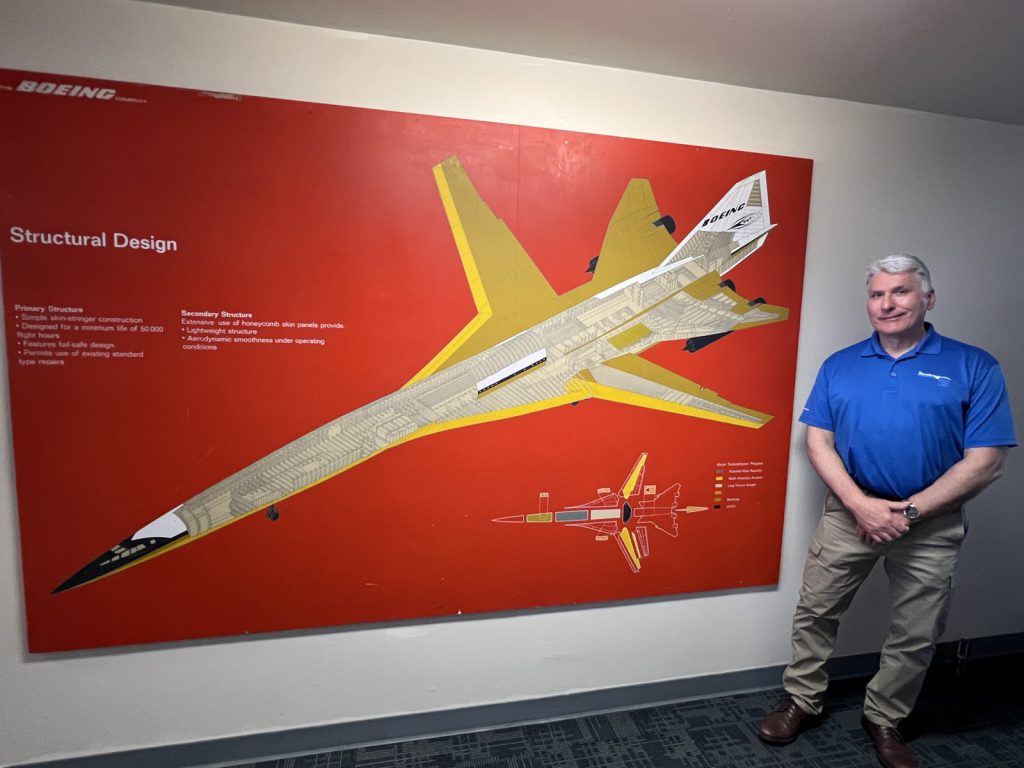
While the moon landing and the 747’s first flight, both in 1969, were huge milestones of success and America’s technological supremacy of the era, still cherished to this day, not all was glorious. In fact, trying to build a giant supersonic airliner (above) carrying almost 300 people at Mach 3, three times the speed of sound, ended up in an equally gigantic failure. After spending about US$1bn, Congress cancelled the program in 1971. It was dubbed “the most expensive aircraft never built”, as technology was simply not up to it yet. Despite many learning effects that found their way into later Boeing models, such as glass cockpits with LCD screens, the only visible remainder was a huge, original-size mock-up of the Boeing SST or Boeing 2707. In fact, there have been two such mock-ups in the second half of the 1960s.
In September 1966, the first giant mock-up of the Boeing 2707-100 was unveiled (top picture) in a hangar at East Marginal Way in Seattle, close to Boeing Field. (See the video below)
It showed the original design with swing wings and a two-part droop nose, both functions could actually be demonstrated on the model.
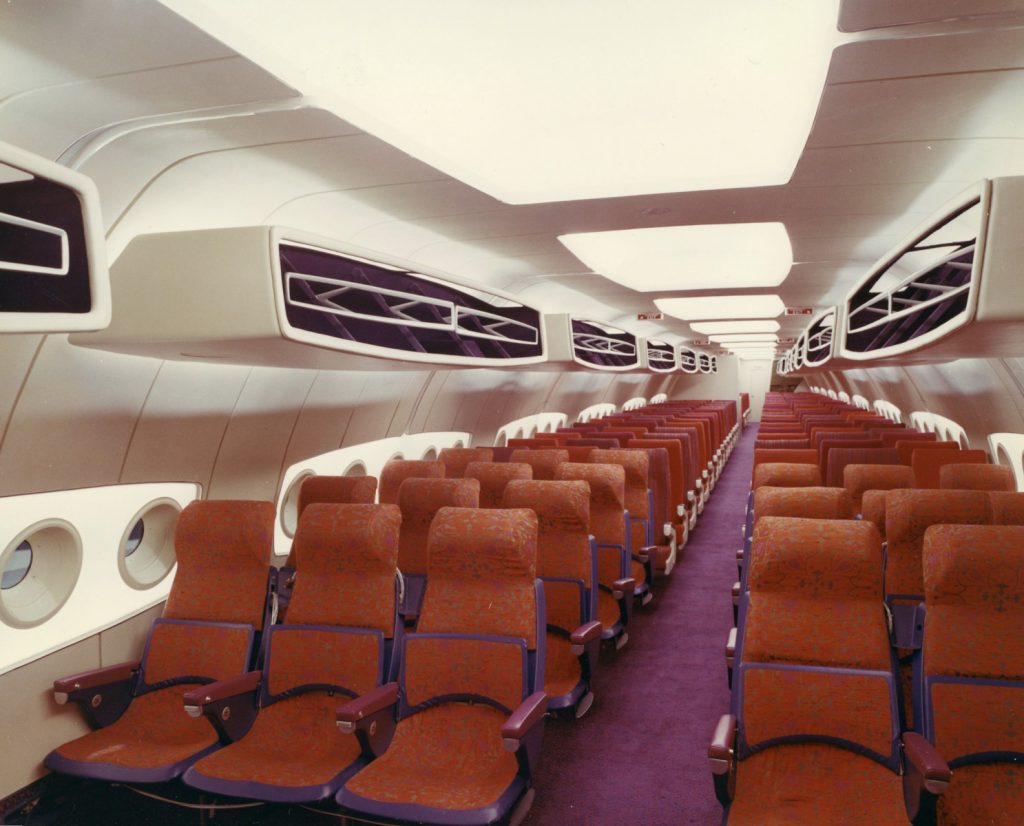
Its cabin was equipped with 277 seats, “The Monster”, as the oversize model was dubbed, quickly became a local attraction. Boeing regularly offered general public tours, and people then queued up patiently in long lines in front of the huge hangar doors.
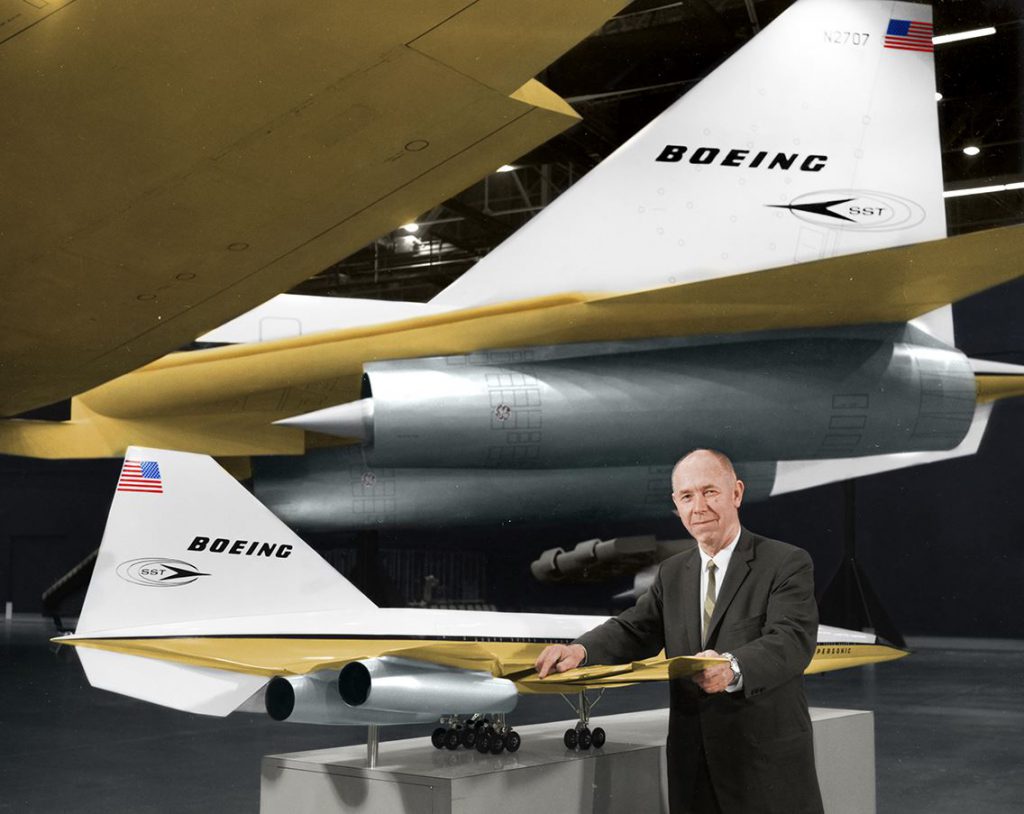
Above: Boeing chief SST designer Maynard Pennell.
However, in 1968 it had become clear that any practical way to use adaptable swing-wings still needed many years of technological progress, and that the only way to get an SST in the air in the medium-term future was to drop them altogether. So in October 1968, Boeing announced it would equip its 2707-300 with a conventional delta wing instead, a radical simplification of the design.
In September 1969, building yet another original-size mock-up started, now of the 2707-300, as well as preparations to build two prototypes, two years behind schedule. As the first mock-up, it just featured one wing (the left), as it was built with one side to the wall, with the fuselage measuring 91 meters (300 feet) in length. There was one important difference between the two mock-ups: “While the yellow swing-wing mock-up was a class 2 mock-up with lots of wood in it, the last delta wing 2707-300 version mock-up was all aluminium and almost exactly built like a production aircraft,” explained Michael Lombardi in an exclusive tour to Airlineratings.com
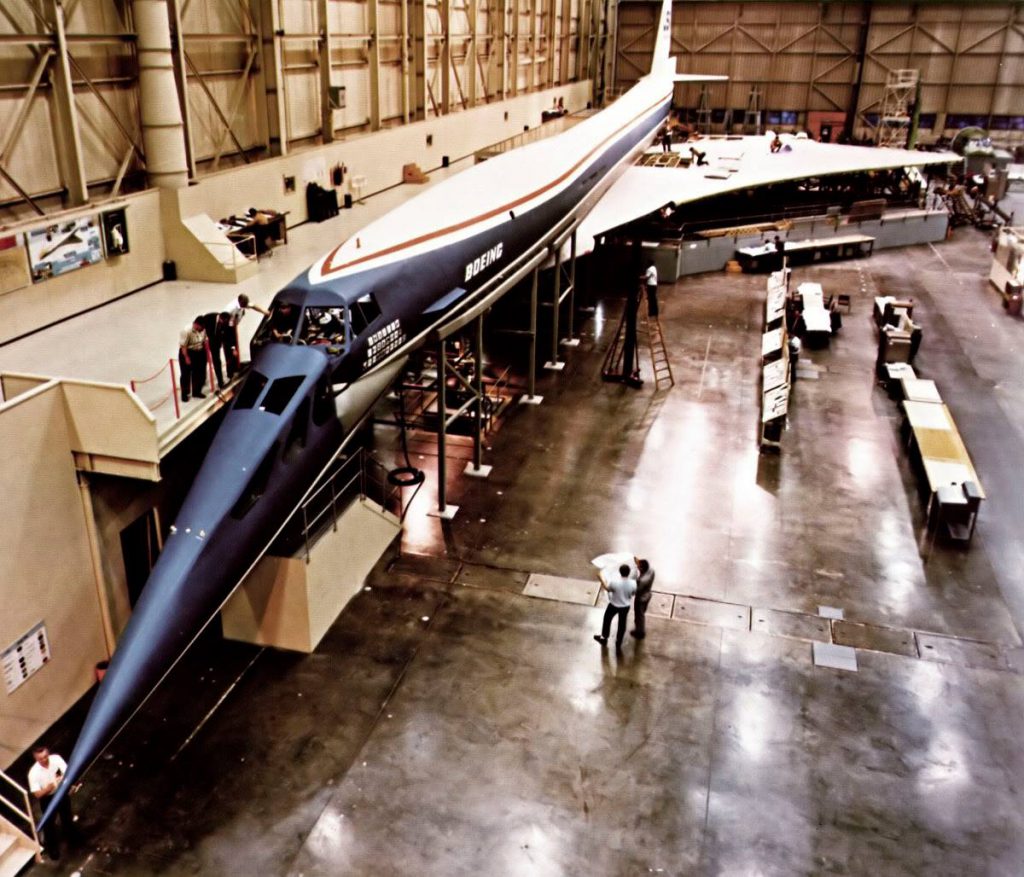
While any traces of the first mock-up have been lost since the second one went on a bizarre odyssey after the termination of the program was announced. It was first kept by Boeing for over a year, in the faint hope that it might be revived.
In a 1972 sealed bid auction, a Nebraska-based millionaire bought it then for US$31,119, as the Orlando Sentinel reported, dreaming of creating an aviation museum around it for which he chose the Orlando area. In January 1973, the flightless aircraft was taken apart and transported to Kissimmee, Florida on seven railroad cars, where it was “reassembled on a huge concrete slab that had been poured in a cow pasture 15 miles east of Disney,” as the paper noted. On July 4, 1973, the SST Air Museum opened. After being an initial success, attendance declined and the museum closed again in 1981. Following some legal wrangling it was sold to a church, which used the former museum for services until 1988. In 1989, another church bought it, the entire SST still inside, and the Pastor initially enjoyed preaching in front of a full-size aircraft replica inside. But then the congregation had massive extension plans for the building, and in 1990 wanted the SST out.
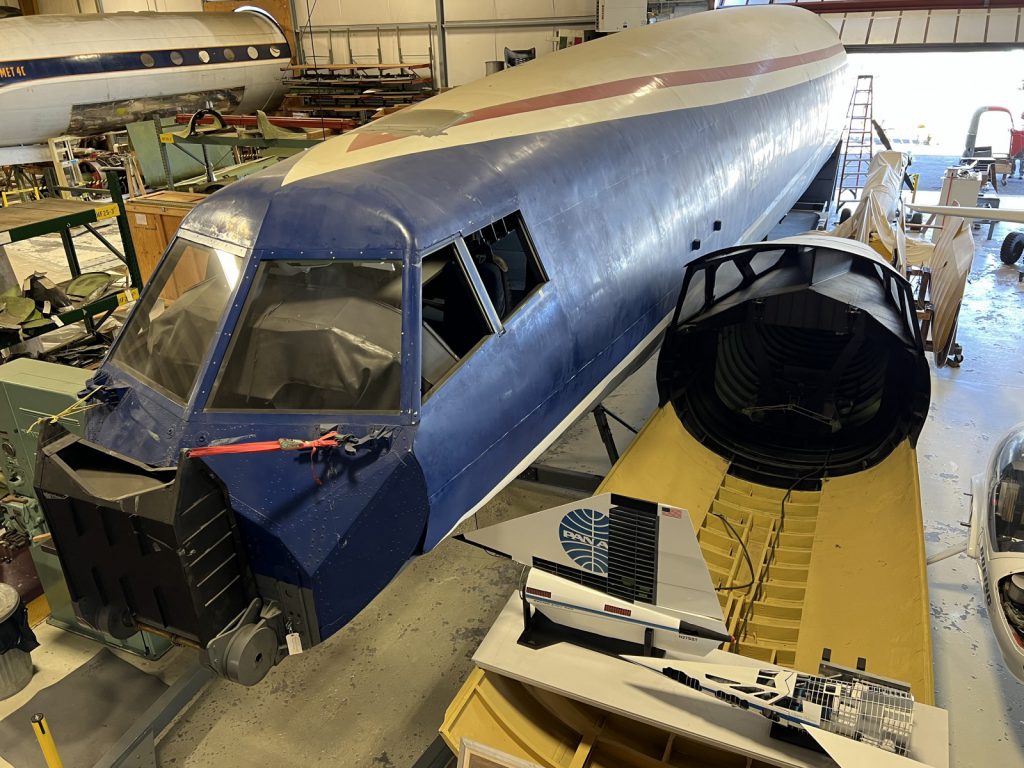
From here things get a bit murky. Some dismantled parts of it ended up in a Florida swamp, while the cherished nose section including the droop nose found its way to another museum. It was the late Stan Hiller, an early helicopter innovator, who bought it and moved what was left of it to his Hiller Aviation Museum south of San Francisco, sometime around 1998. Here, there were even regular demonstrations of lowering the nose section.
After about 15 years in San Carlos, California, a deal was struck between the Hiller Aviation Museum and the Museum of Flight in Seattle, resulting in the 27 meters (90 feet) front section finally coming full circle in April 2013 back to Seattle, where it was stored at the restoration facility of the Museum of Flight in Everett, away from the larger public’s eyes ever since.
Get the latest news and updates straight to your inbox
No spam, no hassle, no fuss, just airline news direct to you.
By joining our newsletter, you agree to our Privacy Policy
Find us on social media
Comments
No comments yet, be the first to write one.

